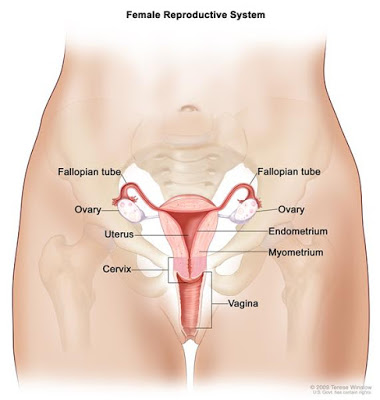
What is the uterus?
The uterus is a complex organ that belongs to the reproductive system of the female body. The organ is also referred to as the womb. It is approximately the size of a pear and is found in the pelvic region beneath the navel or belly button. The uterus is the one that holds fetuses, and it can often expand up to three times its original size.
The uterus is comprised of three layers of tissue, which are the perimetrium, the myometrium, and the endometrium. The perimetrium is the name of the outermost layer of the organ, the myometrium is the middle layer that consists of soft muscles, and the endometrium is the innermost lining of the uterus that is formed over the course of a month. The endometrium is also the lining that is shed during a menstruation period. If pregnancy occurs in the womb, the endometrium layer plays an essential role in supporting the placenta’s weight and supplying nutrients to the fertilized egg.
How does the uterus function?
The ovary releases an unfertilized egg into the fallopian tubes, and through the same organs, it reaches into the lining of the uterus. Fertilization occurs through the union of a female gamete (egg cell) and a male gamete (sperm cell). If the fertilization doesn’t occur in this stage, the uterus lining that has been formed over the course of weeks will slowly begin to detach from the main layers and be flushed out from the female body through menstruation. If the fertilization does occur, the zygote will be formed, and it will stick to the inner lining of the uterus. The same zygote will slowly develop into a fetus, then eventually into a baby in a period of nine months.
During natural childbirth, the baby is pushed out of the womb by the use of a contracting action of the uterus. Even after the baby is born, the uterus contracts further in order to regain its original size and help in restricting and stabilizing excessive blood flow that happens during childbirth.
Why is the uterus removed?
As previously mentioned, the uterus can be removed for multiple reasons. Hysterectomy is a surgical procedure that is used to remove the uterus. Here are several reasons why the uterus is removed:
- To treat chronic pelvic pain
- To prevent uterus cancer, cervical cancer or ovarian cancer
- To hinder infection in the uterus lining
- To stop benign tumors (fibroids) from forming in the uterus
- For the prevention of pelvic inflammatory disease, which is the disease of reproductive organs
- Prevent uterine prolapse, a condition where the uterus slips from its original position into the vagina or birth canal
- To stop adenomyosis, the thickening of the uterine walls when the endometrial tissue encroaches the muscles of the organ. The illness often causes pain as well as a heavy flow of blood during the menstrual cycle.
- To prevent endometriosis, a condition where the endometrium layer grows outside the uterine cavity.
How is a hysterectomy performed?
To perform a hysterectomy, you will be administered by the doctor with either local anesthesia or general anesthesia. The local anesthesia will only make the part to be operated numb, while the general anesthesia will make your whole body numb, and it would make you fall sleep before and throughout the operation. The doctor may require you to stay in the hospital for a few days after the surgery for proper healing. Here are the different ways that hysterectomy can be performed:
- Abdominal hysterectomy – a vertical or horizontal incision is made on the patient’s abdomen. The uterus is removed through the said incision. The marks from the incision will heal in a short period of time, and scars would not be visible.
- Vaginal hysterectomy- a small incision is made inside the vagina, and the opening will be where the uterus is removed. Since there are no external cuts made in this operation, the procedure also doesn’t leave any visible marks like abdominal hysterectomy.
- Laparoscopic hysterectomy- a procedure that makes use of a laparoscope, which is a long, thin instrument fitted with a high-resolution camera and a high-intensity light at the front section. Instead of one very large incision, three or four small incisions are cut on the abdomen. The laparoscope is then inserted through these incisions to remove the uterus.
What are the risks of a hysterectomy?
Though hysterectomy is considered safe, it does have some minor risks associated with it. Here are the risks of having a hysterectomy:
- Chances of infection around the incisions
- Heavy internal or external bleeding
- Injury to the tissues and blood vessels
- Injury to the surrounding organs like intestines, bladder, etc.
Post-hysterectomy recovery tips
Recovery time would depend upon the type of hysterectomy performed. If you have had an abdominal hysterectomy, then the recovery time is longer as compared to other types of hysterectomies. In addition, there are few recovery tips that you must follow to accelerate the healing process.
- Try walking as soon as possible because it will reduce the chances of blood clots forming in the lower body
- Avoid lifting or carrying heavy objects
- Do not perform bending exercises
- Sexual intercourse would need to be avoided for at least a few weeks after a hysterectomy
It is crucial to note that once you undergo a hysterectomy, your menstrual periods will stop, and you won’t get pregnant. Normally, if a woman does not wish to have children, she is often willing to undergo a hysterectomy.
